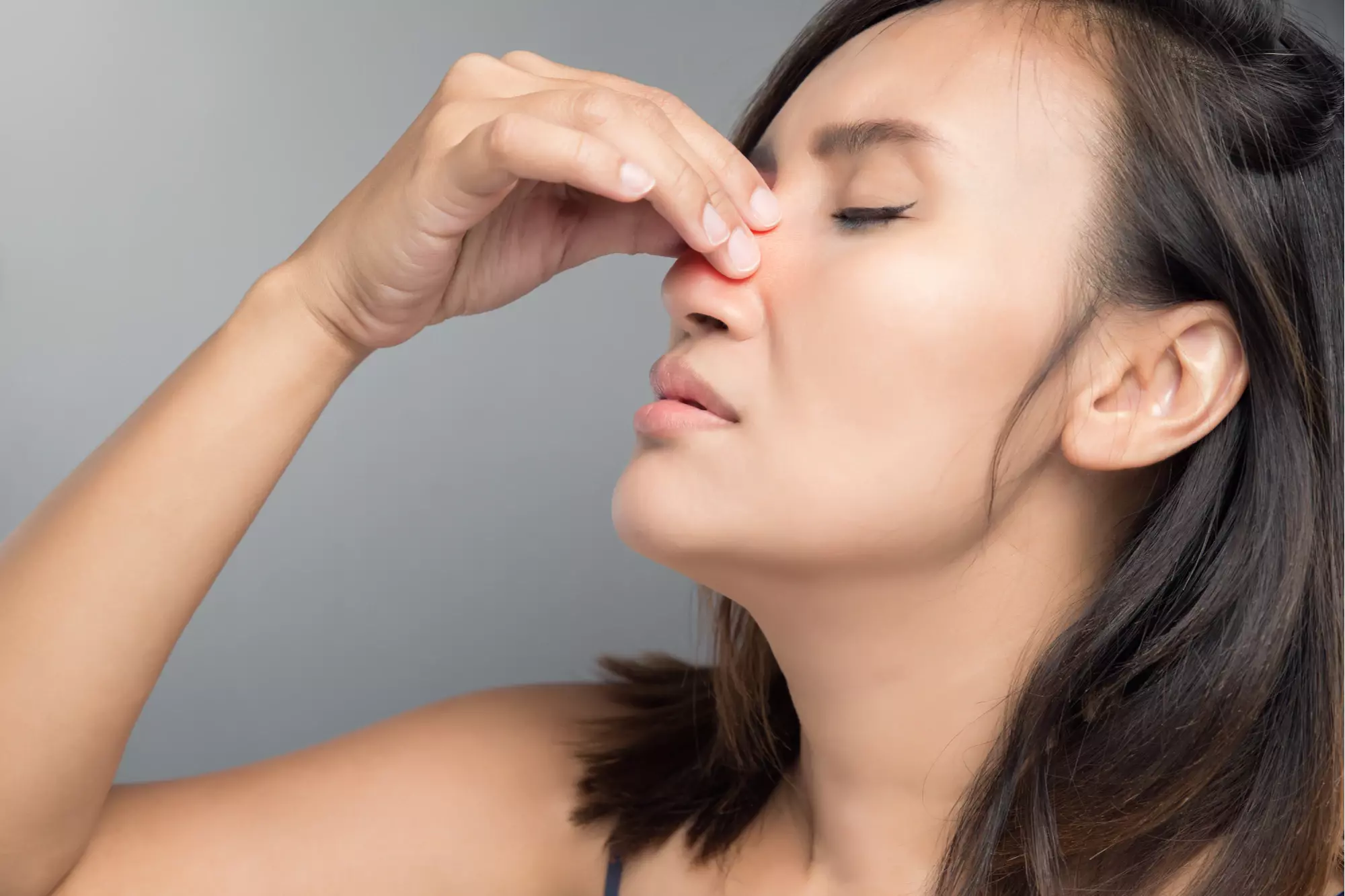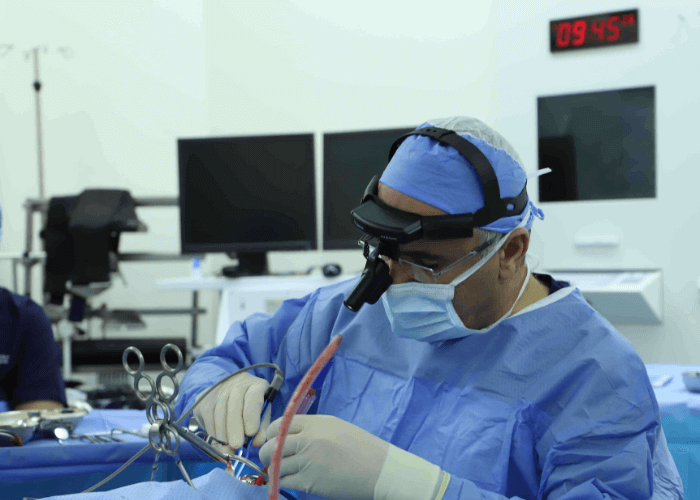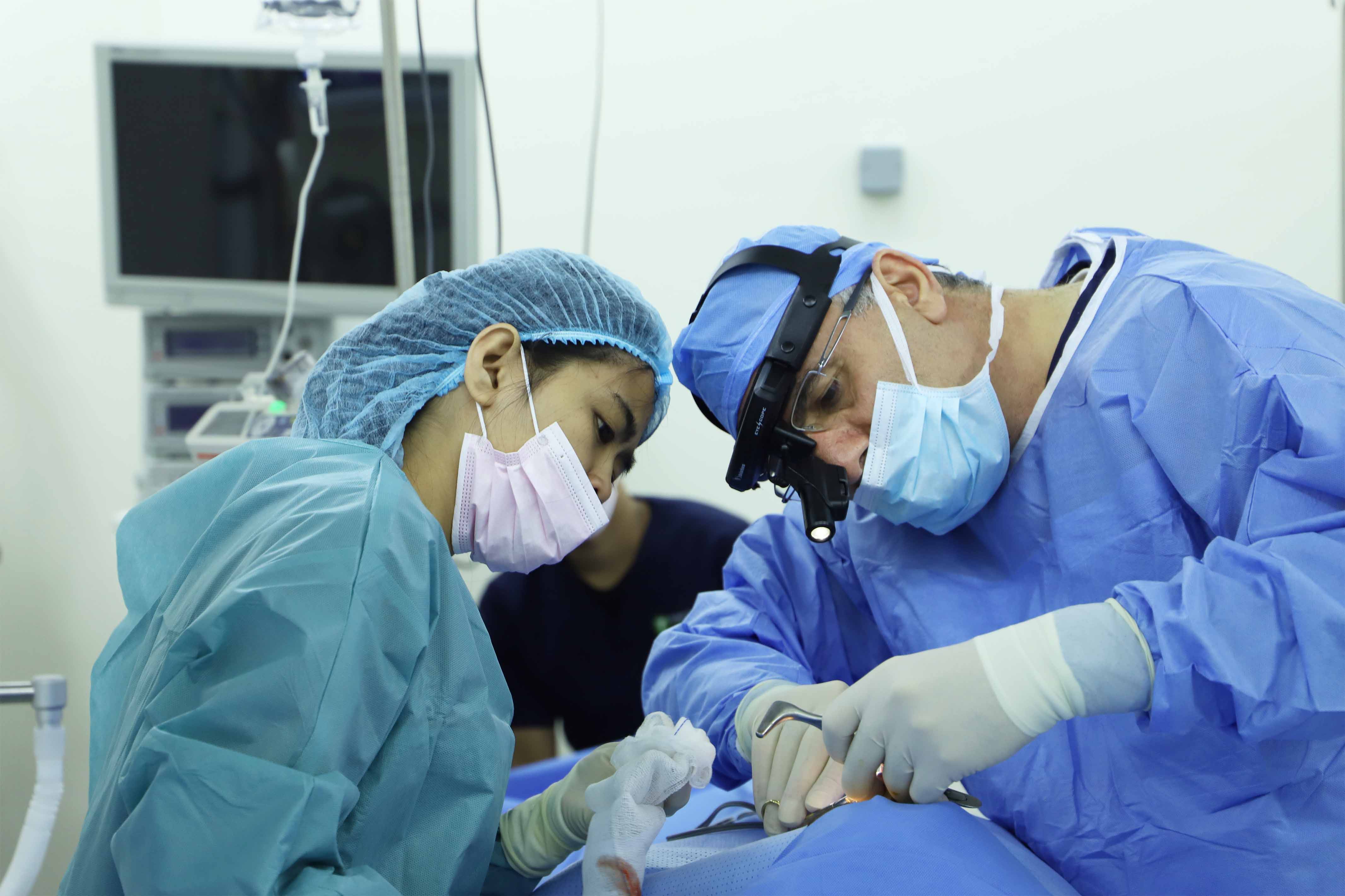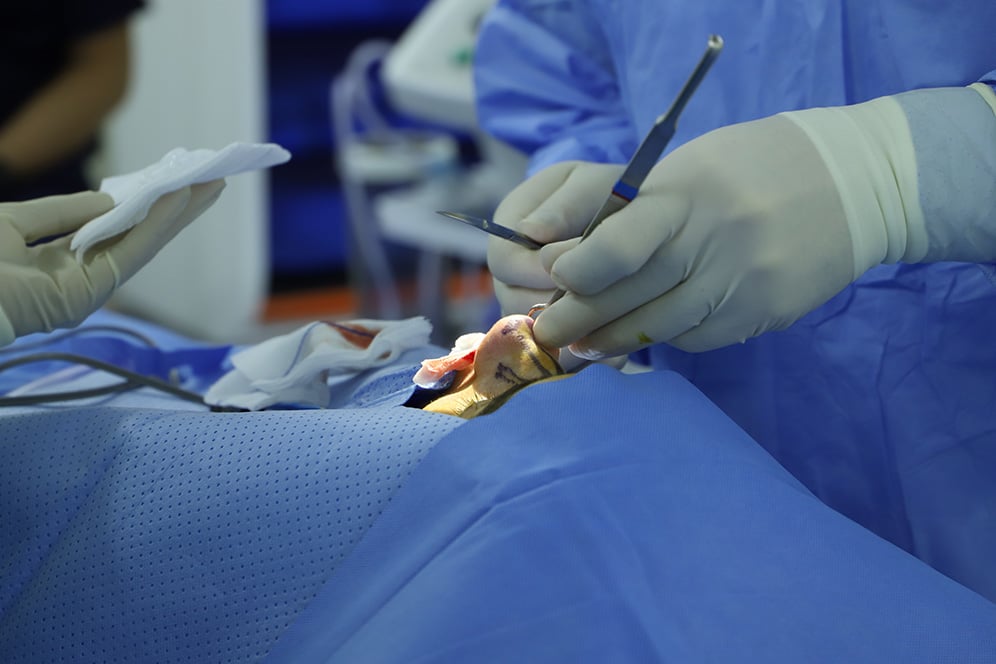Nasal Breathing Difficulty - DRHC Dubai ENT Clinic
The nasal valve is the narrowest portion of the nasal airway. Failure to properly address the nasal valve at primary surgery has been the cause of persistent nasal obstruction in a large proportion of failed septoplasties.
The nasal valve is the area caudal to the nasal bones, and it is unique in two aspects:
- It contains the narrowest section of the nasal airway (i.e., internal nasal valve)
- It contains a mobile collapsible segment (i.e., lateral nasal wall and its contents).
The nasal valve has traditionally been divided into two valves:
Internal valve
- Medial wall: Septum
- Lateral wall: Caudal end of the upper lateral cartilage, anterior part of the inferior turbinate
- Nasal floor: Floor of the bony aperture.
External valve
- Medial wall: Septum, columella
- Lateral wall: Lateral crus of the lower lateral cartilage, fibrofatty alar lobule.
- Nasal floor: Nasal sill.
Nasal valve angle refers to the angle between the caudal edge of the upper lateral cartilage and the septum, and it is measured at 10–15 degrees in Caucasian noses.
How it can be diagnosed?
A thorough nasal examination is essential in diagnosing the cause of nasal blockage. Attention to nasal septal deformity. In many cases of dynamic external valve collapse, the internal valve is the culprit.
A nasal speculum can be used to examine the anterior nasal cavity. However, the nasal airway and the valve area should be examined by an endoscope to assess the anatomy of
- Lateral weak triangle
- Middle crus
- Medial crus
- Membranous septum
- Septum (cartilaginous)
- Lateral crus
- Anterior nasal spine, Floor of the nasal cavity
- Fibrofatty tissue
- Accessory cartilages
- Bony edge of the pyriform aperture
- Anterior head of inferior turbinate
- Attachment of the inferior turbinate to the lateral wall
- Upper lateral cartilage
- Internal valve angle
Treatment
- Nasal valve dilators (e.g., Breathe RightR or NozoventR)
- Nasal steroid medications play a part in the non-surgical management of nasal valve obstruction. The nasal airway and the nasal valve should be inspected in their neutral position. The nasal speculum can distort the anatomy and can hide the culprit.
- Nasal Valve Surgery. The internal valve is also affected via its attachments to the external valve elements; (a) Internal valve angle in resting position
(b) Opening of the internal nasal valve angle during Cottle’s maneuver.
The surgical techniques are divided into:
- Cutting techniques (incision and excision): An excision of a few millimeters of the caudal upper lateral cartilage can increase the valve angle.
- Suturing techniques: Suspension sutures can be used to improve the internal valve area
- Grafting techniques: Position the lar strut, batten, and rim grafts to support the lateral nasal wall from collapse.
- Relocating techniques.
Click here for ENT surgical packages
.png?width=281&height=59&name=bookanappointment%20(1).png)
Dubai ENT clinic - If you are in search of an ENT specialist in Dubai, then DRHC provides experienced and leading ENT doctors in Dubai for healthy treatment. To book your appointment, please call +97142798200 today!




.png?width=281&height=59&name=bookanappointment%20(1).png)
.jpg?width=1080&height=1080&name=DR%20HATEM%20(1).jpg)



